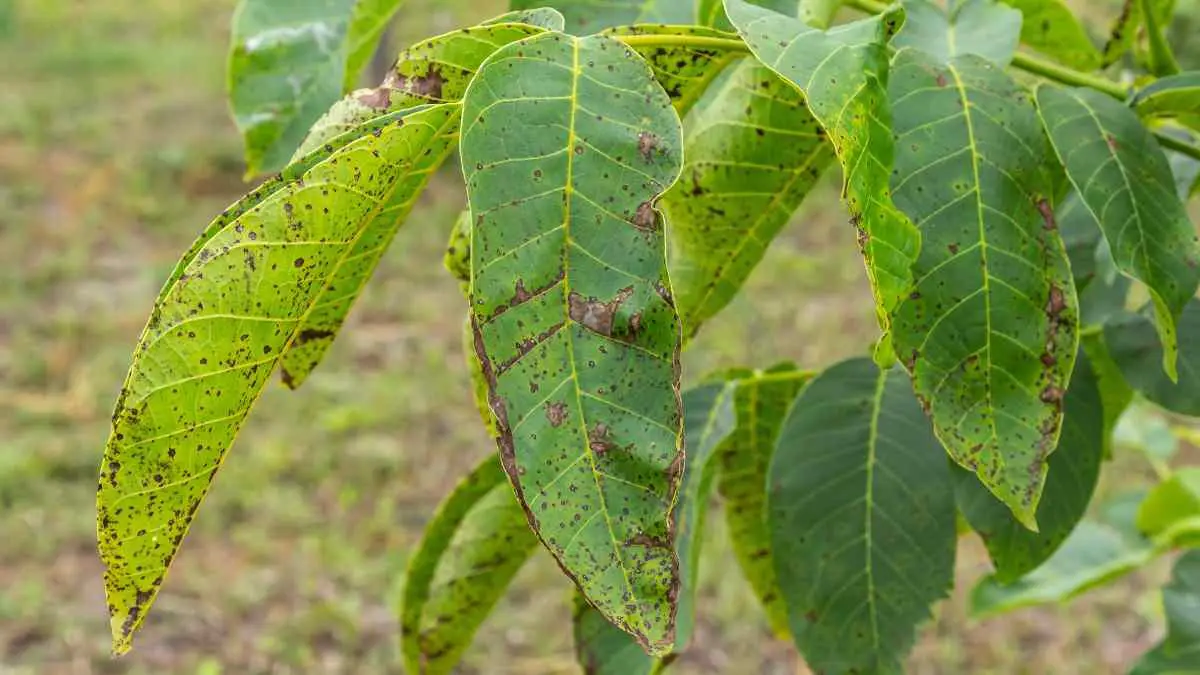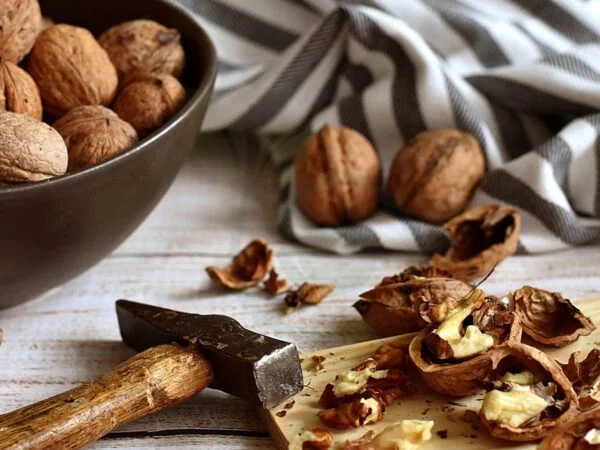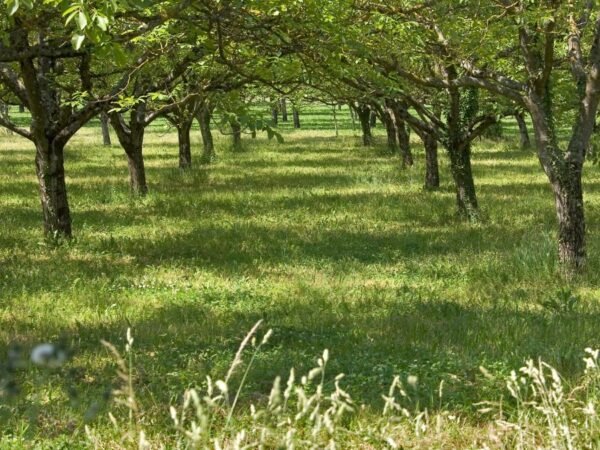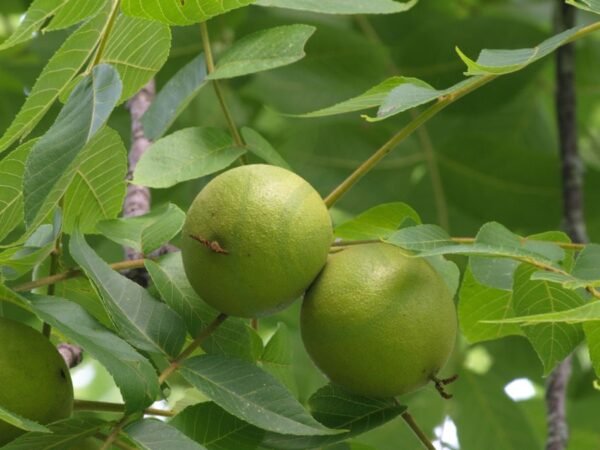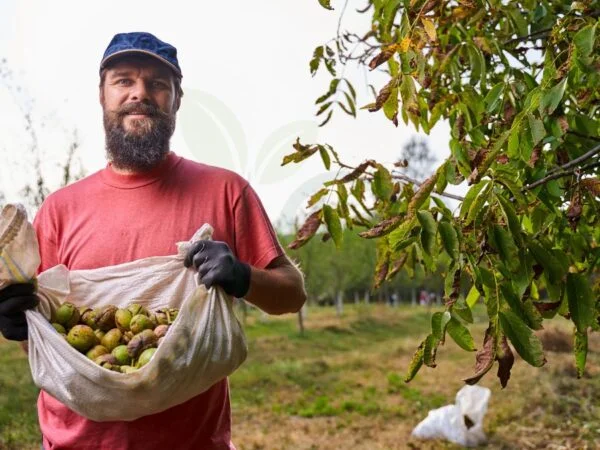Did you know that black walnut trees, known for their woody bark, can live up to 250 years and grow as tall as 150 feet? If you're looking to plant these majestic walnut seedlings or black locust trees in your backyard for forestry or timber, you've come to the right place. In this guide, we will walk you through the step-by-step process of how to plant black walnuts successfully, from seed selection to caring for your growing tree, including corrective pruning and cultivation of young trees.
Whether you're a seasoned gardener or just starting with your green thumb, planting black walnuts can be a rewarding experience. Get ready to witness the beauty and benefits of these walnut seedlings and black locust trees as they flourish in your own outdoor space, promoting forestry with their branches.
Key Takeaways
- Choose the Right Location: Select a sunny spot with well-drained soils for planting young trees, like black walnuts, to ensure optimal growth.
- Check Seed Viability: Test the viability of the seeds by performing a float test before planting to increase the chances of successful germination.
- Collect Walnuts in Fall: Gather ripe walnuts in the fall when they naturally fall from the tree, ensuring they are mature and ready for planting.
- Prepare Seeds Properly: Clean and stratify the seeds to enhance germination rates and promote healthy seedling growth.
- Plant Seeds Correctly: Plant the prepared seeds in a nursery bed or directly in the ground, following proper spacing guidelines for optimal tree development.
- Provide Care for Seedlings: Maintain consistent moisture levels, protect seedlings from harsh weather conditions, control weeds, and use herbicides to support healthy seedling growth.
Choosing Location
Site Selection
Plant black walnuts in areas with adequate sunlight and suitable soil conditions. Consider soil and root impact on nearby plants, ensure proper drainage to prevent waterlogging, and weed control to prevent damage.
Soil Preparation
Before planting, prepare deep, moist, and nutrient-rich soil. Maintain pH levels between 6.0 to 6.5 for optimal growth. Avoid compacted or poorly drained soils.
North American Zones
Understand the ideal zones for planting black walnuts across North America. Consider climate and temperature requirements when selecting a zone based on geographical location.
Seed Viability
Testing Seeds
To assess seed viability, perform a quick test by placing the walnuts in water. Nuts that float should be discarded, while those sinking are viable. Utilize the percentage of viable seeds to determine the number for planting.
Selecting Seeds
When choosing seeds, opt for ones with white, solid meats as they indicate better chances of germination. Avoid nuts with beige, shriveled kernels and unpleasant odors. Opt for high-quality seeds to enhance successful planting outcomes.
Collecting Walnuts
Husking Process
To start, remove husks from walnut seeds carefully to avoid damage. Employ proper techniques for husking to maintain seed integrity. Ensure thorough husk removal to aid germination.
After husking, proceed with nut separation. Distinguish viable nuts from non-viable ones post-husking. Discard any nuts showing decay or damage signs. Keep only healthy nuts for planting.
Seed Preparation
Processing Nuts
To plant black walnuts, start by cleaning and preparing the nuts. Properly store them to maintain viability. Handle with care to prevent damage.
When processing, ensure the veneer of the nut is intact to promote successful germination. Avoid damaging the base of the seed during handling.
Germination Ensuring
For successful germination, provide cold temperatures and moist conditions for the seeds. Prior to planting in spring, stratify seeds indoors.
During stratification, monitor seed moisture levels closely. This process helps mimic natural conditions required for optimal germination.
Planting Seeds
Plantation Guidelines
Plant walnut seeds outdoors in moist soil during the fall season for successful cultivation. Space out seeds adequately if planting more than one per hole to ensure proper growth. Follow recommended guidelines for planting depth and spacing to optimize seed development.
Season Considerations
Consider planting black walnut seeds specifically in the fall to promote optimal growth conditions. Take into account seasonal variations in temperature and moisture levels for better seed germination. Ensure seeds are planted at the right time to increase the chances of successful mowing and plantation establishment.
Seedling Care
Weed Control
Implement effective weed control measures to prevent competition with walnut seedlings. Use mulch or herbicides to manage weed growth around young walnut trees. Regularly inspect and remove weeds to promote healthy walnut tree growth.
Fertilization Practices
Apply appropriate fertilizers to support walnut tree growth. Consider soil nutrient levels when determining fertilizer requirements. Follow recommended fertilization practices to ensure healthy tree development.
Tree Growth
Pruning Techniques
Proper pruning techniques are essential for shaping and maintaining the structure of young walnut trees. Prune regularly to remove dead or diseased branches, promoting overall tree health. Avoid over-pruning as it can stress the tree and hinder its growth.
Thinning Growth
Thinning out excess growth in walnut trees is crucial for ensuring better air circulation within the canopy. Removing overcrowded branches helps prevent competition for resources among the young trees. Maintaining an optimal tree canopy is key to supporting healthy walnut tree growth.
Pest Management
Insects Handling
Walnut trees are susceptible to insect infestations, with common pests including walnut caterpillars and borers. Regularly inspect trees for signs of infestation such as leaf damage or holes in the bark. Implement control measures promptly to prevent extensive damage.
Monitor the trees closely for any signs of insect activity, especially during peak seasons. Applying horticultural oils can help suffocate eggs and larvae, reducing pest populations. Introducing natural predators like ladybugs can aid in controlling insect populations organically.
Implementing shelters around young walnut trees can protect them from crawling insects like root weevils. These shelters act as a physical barrier, preventing pests from reaching the vulnerable parts of the tree. Ensure the shelters are properly installed and maintained for optimal effectiveness.
Disease Management
Educate yourself on common walnut tree diseases such as anthracnose and bacterial blight to recognize early symptoms like leaf spots or cankers. Implement preventive measures such as proper pruning techniques and adequate spacing between trees to reduce disease spread.
To protect your walnut trees from diseases, maintain good air circulation by thinning out crowded branches and removing any diseased plant material promptly. Applying fungicides at the right time can also help prevent fungal diseases from spreading further within the orchard.
Promptly remove and destroy any infected plant material to prevent disease transmission to healthy trees nearby. Proper disposal of infected leaves, branches, or fruits is crucial to minimize the risk of disease outbreaks in your walnut orchard.
Harvesting Walnuts
Wood Milling Basics
Black walnut wood is highly sought after for its desirable qualities in furniture making. The walnut wood boasts a rich, dark color and a beautiful grain pattern, making it ideal for creating elegant pieces. When milling black walnut wood, it's crucial to understand the basics to ensure the best results.
To start, you need to have proper equipment such as a sawmill or chainsaw mill. These tools will help you cut the logs into usable lumber efficiently. Next, focus on cutting techniques, ensuring each piece is milled correctly to preserve the wood's quality and appearance.
One key aspect of milling black walnut wood is drying the lumber effectively. This process involves air drying or using a kiln to reduce moisture content gradually. Properly dried wood prevents warping and cracking in finished products, ensuring durability and longevity.
When crafting furniture from black walnut wood, consider the specific characteristics of the wood. Its hardness and stability make it suitable for various furniture types, from tables to cabinets. Understanding how to work with black walnut wood will help you create stunning pieces that showcase its natural beauty.
- Desirable qualities of black walnut wood
- Rich, dark color
- Beautiful grain pattern
- Milling techniques
- Proper equipment
- Correct cutting methods
- Drying process
- Air drying or kiln drying
- Prevents warping and cracking
- Crafting furniture
- Hardness and stability
- Suitable for various furniture types
Closing Thoughts
In your journey to plant black walnuts, you've learned the critical steps from choosing the right location to nurturing tree growth and managing pests. By following these guidelines, you're on track to cultivate healthy walnut trees and enjoy a bountiful harvest. Remember, patience is key in this process, as it may take several years before you see the fruits of your labor.
As you continue caring for your walnut trees, don't hesitate to reach out to local agricultural extension services or gardening communities for additional guidance. Sharing your experiences and learning from others can enhance your skills and lead to even greater success in growing black walnuts. Embrace this rewarding endeavor and watch as your efforts blossom into flourishing walnut trees.
Frequently Asked Questions
How do I choose the best location for planting black walnuts?
Select a spot with well-draining soil, full sun exposure, and ample space for tree growth. Avoid areas prone to flooding or with competition from other trees.
What is the viability of black walnut seeds for planting?
Black walnut seeds are viable for planting if they are plump and firm. Test viability by placing seeds in water – viable ones sink, while non-viable float.
How should I collect black walnuts for planting?
Collect walnuts when they fall to the ground in late summer or early fall. Wear gloves to avoid staining your hands. Remove husks promptly to prevent mold growth.
What preparation is needed before planting black walnut seeds?
After collecting, clean the seeds thoroughly to remove any remaining husk material. Soak them in water for 24 hours before stratifying them in moist sand or peat moss.
What care do black walnut seedlings require after planting?
Water seedlings regularly, especially during dry spells. Mulch around the base of the seedling to retain moisture and suppress weeds. Protect young trees from deer browsing and other damage.
How long does it take for a black walnut tree to reach maturity?
Black walnut trees typically take 10-15 years to start producing nuts and can reach full maturity after 30-40 years. Regular pruning and care can help accelerate growth.
What are some common pests that affect black walnut trees, and how can I manage them?
Common pests include walnut caterpillars, aphids, and webworms. Monitor trees regularly for signs of infestation and consider using organic insecticides or beneficial insects as control measures. Regular pruning also helps maintain tree health.
Feel free to refer back to these FAQs whenever you have questions about planting black walnuts!
Image Source: Paid image from CANVA

